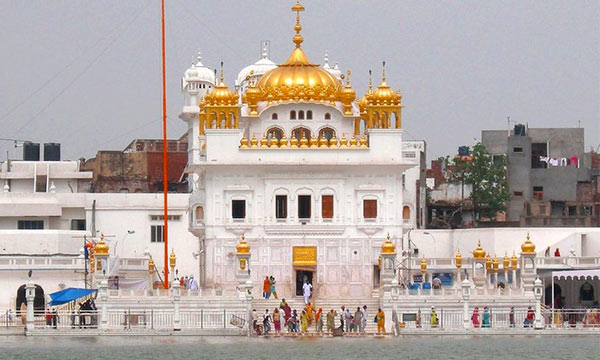Lucknow is the capital and largest city of Uttar Pradesh and is rightly named the “The City of Nawabs” and “The Golden City of India” for its royal etiquette and sophistication. It is also named as Constantinople of the East and is a beautiful display ground of Imambaras, mosques, Islamic shrines and gardens. Lucknow has always been a multicultural city that flourished as a North Indian cultural and artistic hub, and the seat of power of Nawabs in the 18th and 19th centuries. Lucknow is still an important center of governance, administration, education, commerce, aerospace, finance, pharmaceuticals, technology, design, culture, tourism, music and poetry.
Lucknow happened to be a major center of Indian rebellion of 1857 and was active in India’s Independence Movement. The city is famous for its cuisine that includes biryanis, different kinds of kebabs and breads. Ethnicity of Kathak, Khayal, Nawabs and Classical Music originated and became popular here in Lucknow.
This morning, you will be visiting the Great Imambara, Jama Masjid, Picture Gallery, the Clock Tower, RoomiDarwaza, Residency and Dilkusha Palace.
The Great Imambara is a colossal edifice built in 1784 by the then Nawab of Lucknow, Asaf-ud-Daula. It was originally built during the deadly famine to provide aid, shelter and food to people of Uttar Pradesh who were struck helplessly. The monument is unique as it is the largest hall in Asia that doesn’t have any external support from wood, iron and stone beams. Bara Imambara, ChhotaImambara and other monuments display a fusion of Mughlai and Turkish style of architecture. The 60 feet (18 m) tall Rumi Darwaza, built by NawabAsaf-ud-daula in 1784, served as the entrance to the city of Lucknow. The edifice at the west opens to the Great Imambara and is embellished with lavish decorations. DilkushaKothi is the remains of a palace constructed by the British resident Major Gore Ouseley around 1800 and showcases an example of English Baroque architecture. It was used as a hunting lodge for the Nawab of Awadhs and as a summer resort.
Afternoon is free for a stroll or shopping around Hazratganj, the city’s central shopping area, there is a fusion of old and modern architecture. Shopping in Lucknow is must for embroidery works including chikankari, zari, zardozi, kamdani, and gota making. Overnight is in the city of royals, the city of Lucknow.























































